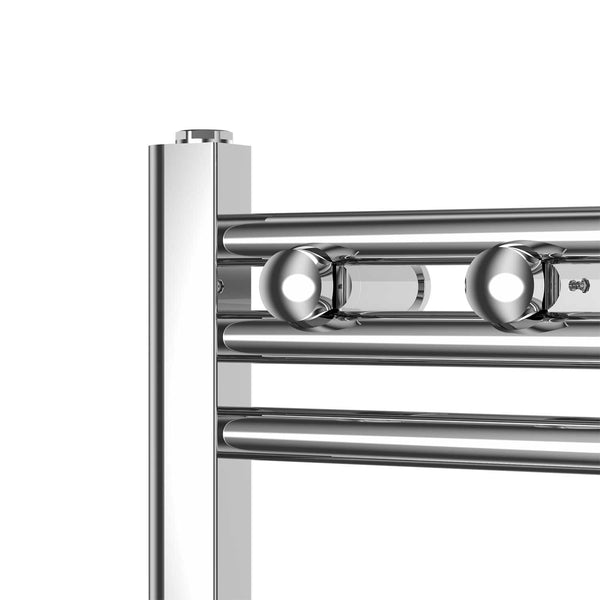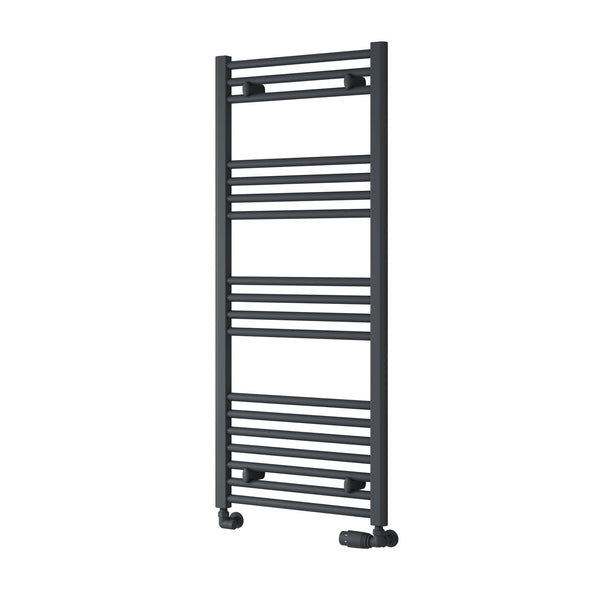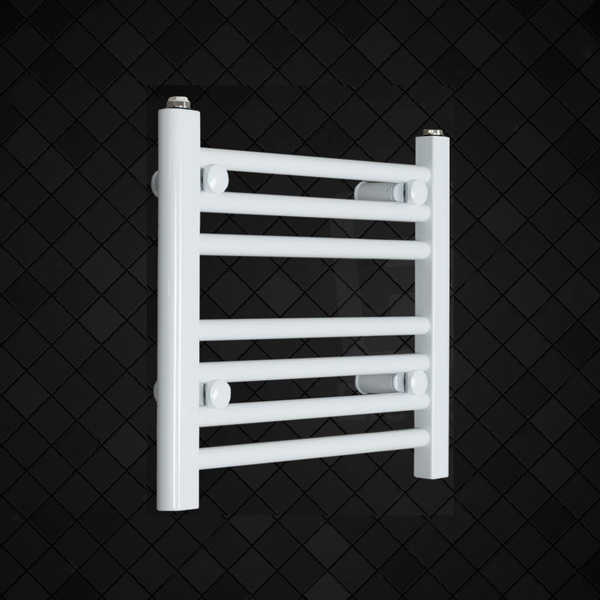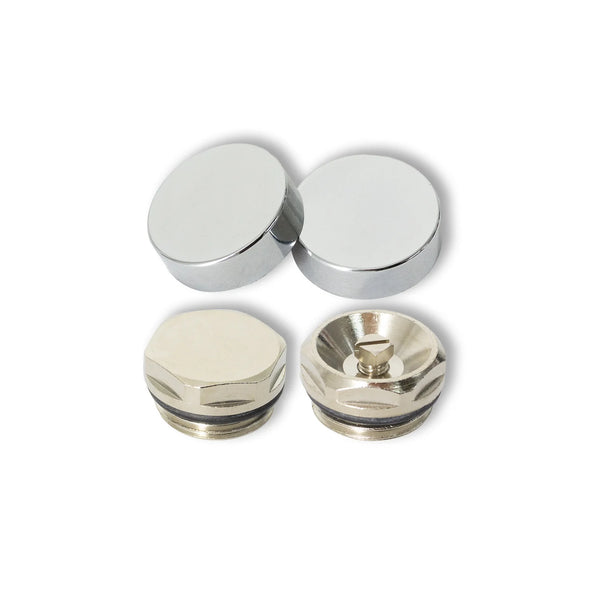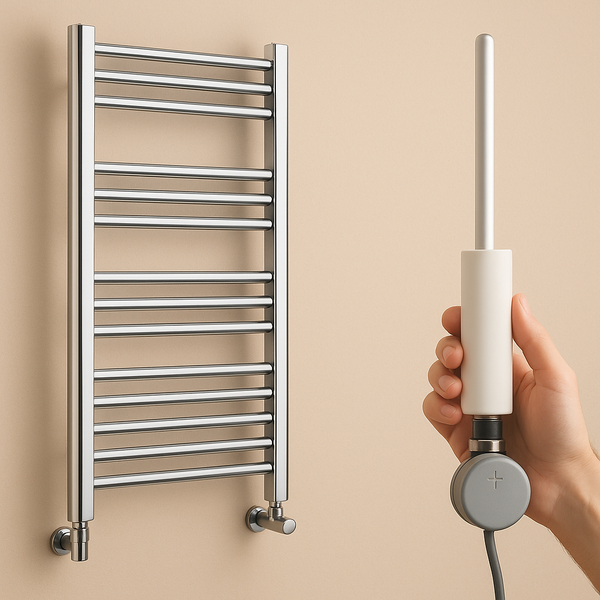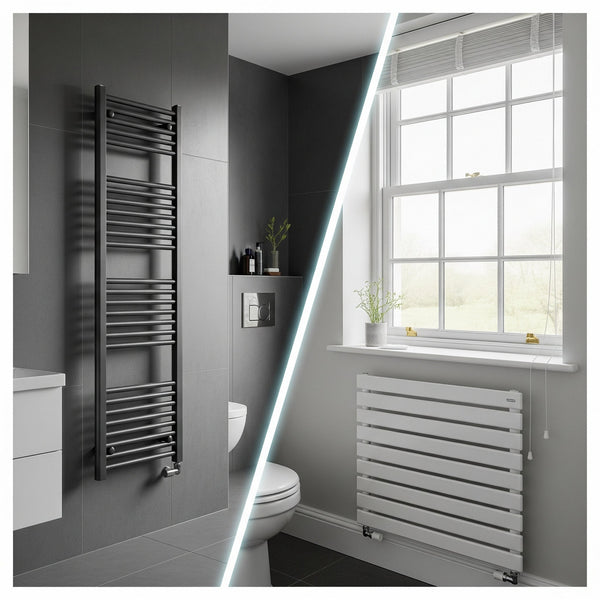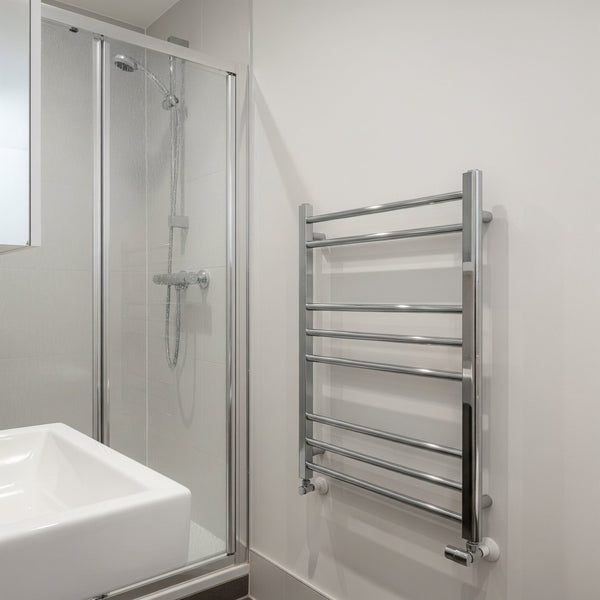What is a BTU and How to Calculate the Right Heat Output for Your Bathroom?
If you’re planning a bathroom renovation or simply upgrading your towel rail, one of the most important and most overlooked steps is understanding BTU. It’s not just a technical acronym; it’s the key to choosing the right radiator or electric towel rail that actually warms the space effectively. In this guide, we’ll break down what BTU means, why it matters for bathroom heating, and how you can easily calculate the exact heat output your space needs.

What Does BTU Stand For?
BTU stands for British Thermal Unit. It’s the standard unit used in the UK to measure thermal (heat) energy. One BTU is the amount of energy required to raise the temperature of one pound of water by one degree Fahrenheit. When it comes to home heating, BTU ratings help us understand how much heat a radiator, towel rail, or heating unit can produce and whether it’s enough to warm a specific room.
The higher the BTU rating, the more heat the radiator can emit per hour. Choosing a towel rail with too few BTUs will leave your bathroom cold and damp. Too many, and you waste energy and money. So it’s crucial to get it right.
Why Is BTU Important for Bathrooms?
Bathrooms are often smaller than other rooms but require a relatively high heat output. That’s because they’re usually tiled, may have poor insulation, and are prone to humidity and condensation. A correctly sized towel rail or radiator ensures not only warm towels but also a cosy, dry environment helping to prevent mould, improve comfort, and reduce energy costs.
Unlike living rooms or bedrooms, you can’t rely on aesthetics alone when choosing a bathroom radiator. BTU calculation should be your first step especially if the room lacks underfloor heating or has external walls and windows.
How to Calculate the Right BTU for Your Bathroom
Calculating your BTU requirement isn’t as hard as it sounds. The easiest and most accurate way is to use our online BTU Calculator. Just enter your room dimensions and a few details about the space, and we’ll do the maths for you.
Or Calculate It Manually (Rough Estimate)
- Measure the room (length × width × height in metres).
- Multiply these three values together to get the room volume in m³.
- Multiply the volume by 40–60 (depending on insulation) to get a rough BTU estimate.
Example: A bathroom that is 2.5m wide × 2m deep × 2.4m high = 12m³ 12 × 50 = 600 BTUs required (if medium insulation)
Keep in mind that this method gives a general idea, but it doesn’t account for windows, external walls, extractor fans, or the presence of a bath/shower all of which can affect the heat requirement.
How Do BTUs Relate to Towel Rails?
Every towel rail or bathroom radiator has a specific BTU rating. When browsing our Electric Towel Rails, you’ll notice that we display the BTU output of each model clearly in the specifications.
Once you know the BTU you need, choose a model that meets or slightly exceeds that number. If you’re aiming for a warm, dry bathroom plus toasty towels, it’s better to go a little over than under.
For larger bathrooms or poorly insulated rooms, you might need a wider or dual-bar towel rail. For smaller spaces or cloakrooms, a compact vertical rail may suffice but the BTU must always match the room’s needs.
Can One Towel Rail Heat the Entire Bathroom?
In most cases, yes if the towel rail is properly sized. A chrome towel rail with a high enough BTU rating can serve as both a towel warmer and the primary heat source for the room. This is particularly effective when paired with a smart timer or thermostat.
However, in large or poorly insulated bathrooms, you may want to use a combination of underfloor heating and towel rails, or install two towel radiators (e.g., one near the shower and another near the sink).
Electric vs Central Heating BTU Ratings
Whether you're using a central heating towel rail or an electric model, the BTU rating applies the same way. But there are a few key differences to keep in mind:
- Electric towel rails usually have fixed outputs (e.g., 150W = ~512 BTU). They’re ideal for year-round use and quick warm-ups.
- Dual fuel models offer more flexibility use central heating in winter, and electric in spring/autumn without switching on the whole system.
- Central heating towel rails rely on your home’s boiler system and heat up when the full system is active.
Need help picking the right type? Our team is happy to help just head to our Contact Page.
How to Reduce Your BTU Requirements
If you're concerned about high BTU requirements or energy usage, here are a few things you can do to lower heat loss and reduce the BTU needed:
- Improve window insulation or install double glazing
- Use a good extractor fan to reduce moisture
- Install a heated mirror to reduce condensation
- Use thermostatic controls on electric towel rails
Final Thoughts: Don’t Guess, Calculate
Choosing a towel rail based on looks alone can lead to chilly bathrooms and unhappy guests. Whether you’re outfitting a family home or a chain of Airbnbs, getting the BTU calculation right is essential for comfort and efficiency. Start with our free BTU Calculator, browse our extensive in-stock towel rail range, and reach out to our expert team for tailored advice.
At Company Blue, we stock hundreds of towel rails in various sizes and finishes all ready for fast UK-wide delivery. Warm bathrooms, dry towels, and energy savings? It all starts with the right BTU.
Frequently Asked Questions About BTU and Bathroom Heating
1. What does BTU mean?
BTU stands for British Thermal Unit, a measure of heat used to indicate how much energy a towel rail or radiator can output per hour.
2. Why is BTU important for bathrooms?
Bathrooms require higher heat output due to tiles, ventilation, and humidity. A proper BTU rating ensures the space stays warm and dry.
3. How can I calculate the BTU for my bathroom?
You can use our free BTU calculator to quickly find out how much heat your bathroom needs.
4. Is it better to have a higher or lower BTU?
It’s generally better to slightly exceed your required BTU than fall short. Underpowered towel rails won’t keep your bathroom warm.
5. Do electric towel rails have BTU ratings?
Yes, electric towel rails have BTU equivalents based on their wattage. For example, 150W equals approximately 512 BTUs.
6. Can one towel rail heat the entire bathroom?
Yes, if it has the correct BTU rating for the room size. For larger bathrooms, you may need more than one heat source.
7. What factors affect BTU requirements?
Room volume, number of windows, insulation quality, external walls, and extractor fans can all impact BTU needs.
8. Are dual fuel towel rails better for heat control?
Yes, dual fuel models let you switch between central heating and electric mode, offering more flexibility and efficiency.
9. Do all towel rails on Company Blue show BTU ratings?
Yes, every product page includes BTU output so you can choose the right model confidently.
10. Who can help me choose the right BTU towel rail?
Our team is happy to help. Visit our Contact Page for expert advice.
